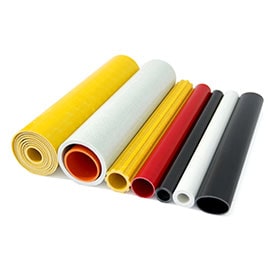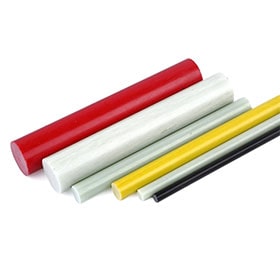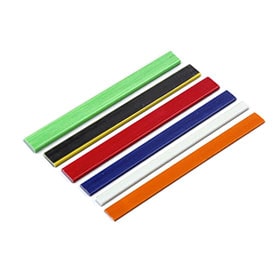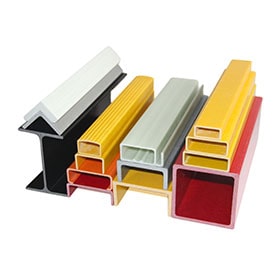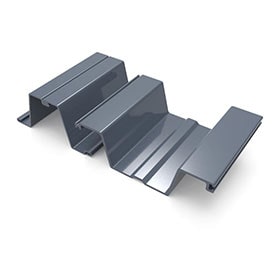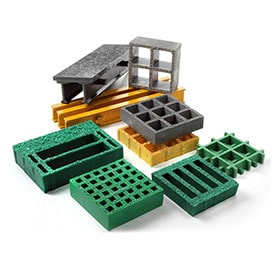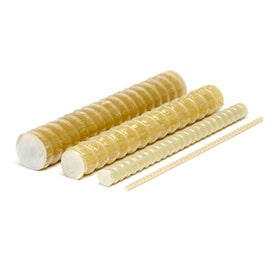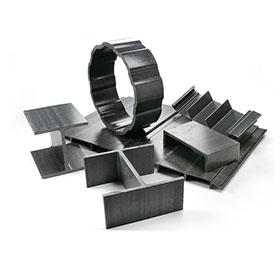Learn how the FRP pultrusion process works, what equipment you need, where pultruded profiles are used, and why fiberglass pultrusion machines are the preferred choice for modern composite manufacturing.
- Introduction
- What is FRP Pultrusion?
- How the Pultrusion Process Works
- Types of FRP Pultrusion Machines
- Applications of Pultruded FRP Products
- Advantages vs. Traditional Materials
- Why Choose Pultrusion Machines from China
- Case Study: FRP Rebar Pultrusion Line
- Frequently Asked Questions (FAQ)
- Get a Quote
Introduction
FRP pultrusion is a continuous, automated process that produces fiber reinforced polymer profiles with constant cross-sections—such as FRP rebar, rods, tubes, beams, channels, and gratings. Compared with traditional molding, pultrusion offers stable quality, high throughput, and excellent control of fiber alignment, resulting in outstanding strength-to-weight performance.
What is FRP Pultrusion?
The word “pultrusion” combines pull and extrusion. Unlike extrusion which pushes material through a die, pultrusion pulls fiber reinforcements through resin and a heated die to form cured composite profiles.
- Fibers: E-glass fiberglass (common), carbon, or basalt.
- Resins: Unsaturated polyester, vinyl ester, epoxy, or polyurethane—selected based on mechanical, chemical, and thermal performance.
- Outputs: Continuous profiles with consistent quality and precise dimensions.
Step-by-Step Workflow
- Fiber Feeding: Rovings/mats are guided from creels into pre-formers.
- Resin Impregnation: Fibers pass through a resin bath or injection box for complete wet-out.
- Forming & Curing: The bundle enters a heated steel die for shaping and polymerization.
- Continuous Pulling: Hydraulic or crawler pulling maintains stable speed and pressure.
- Cutting: A flying saw cuts profiles to required lengths with clean edges.
| Step | Description | Output |
|---|---|---|
| 1. Fiber Feeding | Rovings/mats guided through pre-formers | Aligned reinforcement |
| 2. Resin Wet-Out | Resin bath or injection chamber | Impregnated fiber bundle |
| 3. Heated Die | Forming, shaping, and curing | Solid composite profile |
| 4. Pulling | Hydraulic/crawler traction | Continuous product |
| 5. Cutting | Flying saw to fixed/custom length | Finished profiles |
For a deeper dive into parameters (speed, temperature, pressure), see our Pultrusion Technical Parameters.
Types of FRP Pultrusion Machines
- Hydraulic Pultrusion Machine: High pulling force for large/structural profiles (I-beams, channels, heavy tubes).
- Crawler Type Pultrusion Machine: Smooth, uniform traction ideal for thinner or delicate profiles.
- Multi-line Pultrusion Machine: Simultaneous production of multiple rods/rebars/small profiles to boost throughput.
- Double Station Pultrusion Machine: Parallel operations for higher productivity and reduced downtime.
- Custom Pultrusion Solutions: Tailored lines for specific profiles and industries; compatible with bespoke steel dies and resin systems.
Explore our equipment range: FRP Rebar Line · Fiberglass Tube Line · Profile Pultrusion Equipment
Applications of Pultruded FRP Products
Construction & Infrastructure
- FRP rebars for concrete reinforcement
- Structural beams, columns, handrails
- Walkways, platforms, and gratings
Electrical & Energy
- Non-conductive cable trays and ladder rails
- Utility poles and composite insulators
- Support structures with electrical insulation
Marine & Offshore
- Corrosion-resistant docks and walkways
- Deck gratings and safety railings
- Ship ladders and platforms
Transportation
- Lightweight beams and components
- Bridge decks and reinforcement elements
- Rail and truck interior supports
Industrial & Chemical
- Chemical-resistant gratings and platforms
- Tanks, covers, guards, and structural frames
- Non-sparking and low-maintenance solutions
Advantages of FRP Pultrusion vs. Traditional Materials
| Feature | Steel | Aluminum | FRP Pultrusion |
|---|---|---|---|
| Corrosion Resistance | Poor | Moderate | Excellent |
| Strength-to-Weight | High weight | Light | Very high |
| Electrical Insulation | Conductive | Conductive | Non-conductive |
| Thermal Conductivity | High | Medium | Very low |
| Maintenance | High | Medium | Low |
| Lifespan | Medium | Long | Very long |
Result: FRP profiles provide durable, lightweight, and cost-effective performance—especially in corrosive and electrically sensitive environments.
Why Choose Pultrusion Machines from China
- Advanced hydraulic and crawler traction technology
- Competitive pricing with proven reliability
- Custom dies, multi-line options, and process integration
- Spare parts supply and remote/on-site commissioning
With turnkey solutions covering equipment, molds, process tuning, and operator training, Chinese suppliers help new plants start production quickly and confidently.
Case Study: FRP Rebar Pultrusion Line for Construction
A Middle East contractor invested in a multi-line FRP rebar pultrusion system. Within six months, capacity reached ~2,000 tons/year. FRP rebars replaced steel in infrastructure projects, reducing corrosion-related maintenance while improving lifecycle economics.
- Outcome: Stable output, consistent diameter and rib geometry
- Benefit: Lower total cost of ownership vs. steel rebar in corrosive environments
- ROI: Strong demand from local contractors accelerated payback
Frequently Asked Questions (FAQ)
What is the typical lifespan of a pultrusion machine?
With regular maintenance and proper alignment, high-quality pultrusion machines typically operate for 10–15 years or more.
How much does a pultrusion machine cost?
Depending on size, configuration, and customization, typical ranges are USD 20,000–120,000+. Multi-line and special profiles may require higher budgets.
Which resins are used in FRP pultrusion?
Common choices are polyester (cost-effective), vinyl ester (chemical resistance), and epoxy (high mechanical/thermal performance).
Can one line produce multiple profiles?
Yes. Multi-line systems can produce several small profiles simultaneously; tool/die changes allow different cross-sections on the same base line.
What speeds are typical?
Typical production speeds are 0.3–1.5 m/min, depending on profile size, resin reactivity, and die temperature.
Get a Quote or Technical Consultation
Looking for a trusted FRP Pultrusion Machine Manufacturer in China? We provide equipment, molds, commissioning, and training.
- Email: Jessica@frpzs.com
- WhatsApp: +86 15303735673
Tell us your target profiles (rebar/tube/profile), diameter/size, and required capacity—we’ll tailor a solution.
 +86 15303735673
+86 15303735673 Jessica@frpzs.com
Jessica@frpzs.com
 Technical Data
Technical Data



